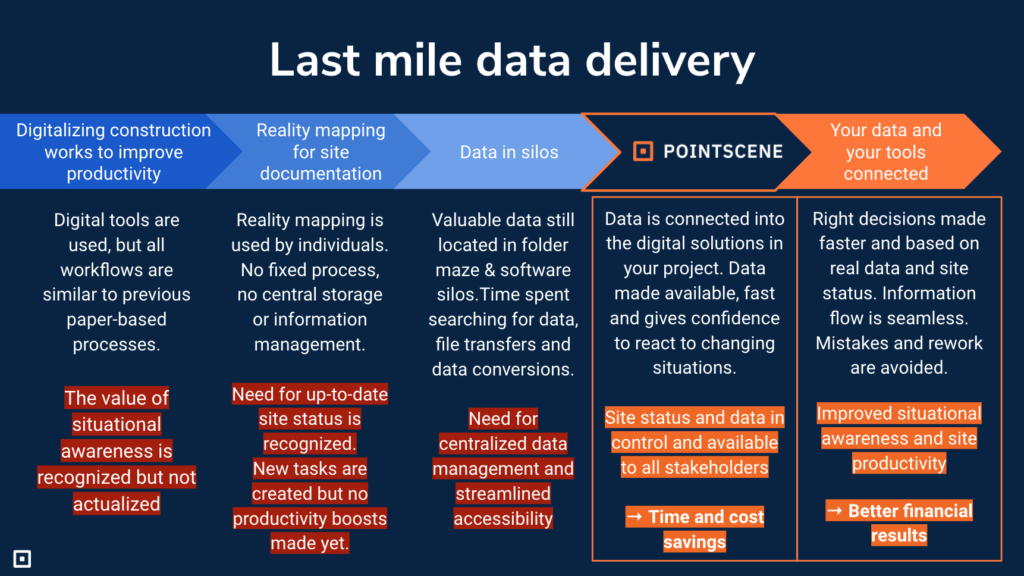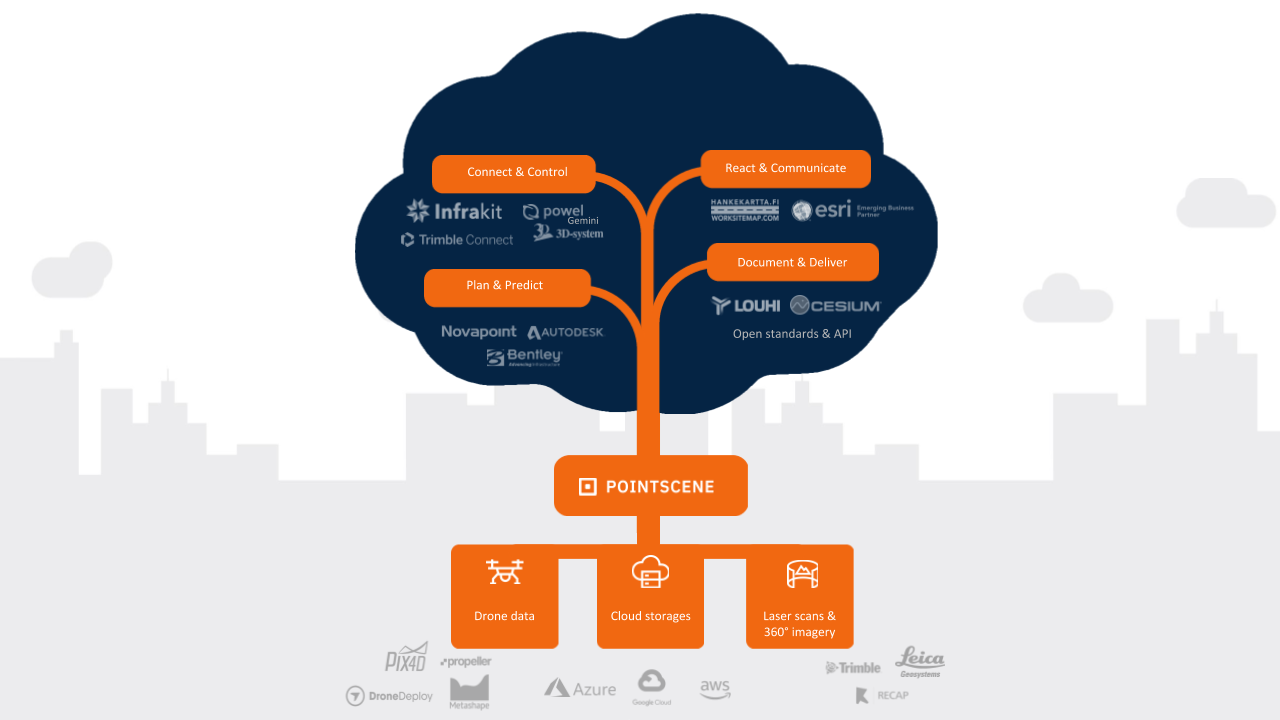Reality-capture technologies like drones, 360° cameras, and laser scanners promise to provide up-to-date information about construction site conditions. These transformational tools can give teams the situational awareness they need to adapt to changes on-site. Thus keep their projects profitable.
So why have so many construction companies implemented reality capture tech — only to wonder when they’d see the promised boost to productivity?
The problem is not the reality-capture tools themselves. It’s that many of us treat these technologies as plug-and-play replacements for traditional methods. We often think about laser scanners as a substitute for hand measurement tools when capturing site dimensions, or drones as a substitute for traditional topographic survey.
That means we implement this new kind of documentation tool — which generates an entirely new kind of data and source for information — on top of file-management systems that were built for old kinds of data. Inevitably, these management systems prove inadequate for the task, and we run into a familiar challenge:
The valuable data gets stuck in silos and we don’t see the productivity boost we were promised.
The data problem
Here’s an example workflow. A project regularly gathers site data and uses it for their intended application, like generating reports, making as-built measurements, or visualizing progress. Then the project stores that data in the traditional way: in a maze of folders on decentralized local servers, a cloud solution, or a standard file-sharing tool.
When a second project employee, or any other stakeholder, wants to use that data for their own application, they will waste time finding it, transferring it, and even converting it to the right format for their software.
A worst-case scenario: The process is so difficult or time-consuming that the stakeholder never uses the data at all. This means a lot of missed opportunities for savings because the reality capture data isn’t being used to its full potential to improve project efficiency, for example in tasks like
- performing stock inventory
- developing optimal material purchase and sourcing routines
- planning collision and issue avoidance
- making temporary construction designs
- terrain modeling
- reducing unnecessary site visits
- onboarding new members of workforce
- reviewing site conditions in regular meetings
The best-case scenario isn’t much better: Different people working on the project spend all the time they need to find the data, get it ready, and use it for their application. This is also very expensive for the project.
Imagine you are responsible of a multi-year project with a crew of 30 engineers and foremen, and each employee spends 10% of their time—which is half a day each week—on managing, sharing, and finding site-documentation data. Quick calculation shows that, on aggregate, your team will waste a total of several days a week managing data when they could be solving issues on the site instead. During the course of the project, file and data management inefficiency will actually cost your project millions.
It’s no surprise that many projects that implement reality capture tools aren’t seeing the ROI they hoped for.
A solution
To solve this problem, we need to use a centralized digital platform designed specifically for reality-capture data. We need to make it easy for any stakeholder across the project to access that data in their native applications.
Our industry’s answer is not simply to “go buy another better tool” to replace the ones that we’re already using. The answer is to make fundamental changes to the way we harness the data and shift the way we do things at a more fundamental level. Doing that will give projects the ROI they’re looking for in a time when profit margins are shrinking, and take the digital transformation of our industry another huge step forward.
Want to see this in action? Meet us in our live demo and we can continue the discussion!



